A Paradox is a Gun - Shadow of Memories/Destiny

Shadow of Memories/Destiny (SoM/D) is a time-hopping narrative puzzle game set in the deliciously unsubtly named German village of Lebensbaum; a fantastically real setting featuring a cozy diner, a pack of road-blocking wild dogs, and our himbo-tastic protag Eike (the tree references are excessive).
Background
Developed and published by Konami, SoM/D stands out as a shining example of the 6th generation’s (arguably signature) weird and experimental.
It largely runs off dream logic and absurd scenarios, the plot is incredibly contrived and silly, and the performances are fittingly hammy.
It shares its year of Konami releases with timeless classics, such as ESPN NFL PrimeTime 2002, and Frogger: The Great Quest. Also, the incredibly
obscure Silent Hill 2 and Metal Gear Solid 2: Sons of Liberty, tough competition!
Development was led by Suikoden team’s Junko Kawano, who wrote, directed, produced, planned, character-designed, and voice-acted (the cats,
importantly) for this title. From the credits it does seem like she was the central figure behind this game’s conception, and my curiosity did
compel me to try and reach out to her, but this (unfortunately) proved fruitless.
Interestingly enough this wouldn’t be her only time travel game, as she’d also write and design for Time Hollow; a 2008 DS game -also- featuring
time-travel mechanics, arguably a semi-successor. Unlike SoM/D’s third person freeroam however, this game would adopt more of a graphic novel
puzzler format, maybe a bit more overt in its narrative focus which, in hindsight, SoM/D could’ve/might’ve/would’ve benefitted from as well.
Regardless I haven’t played Time Hollow, and anything I find about it calls it something in the vein of ‘painfully average’; the crime of being
functional and unprovocative (a perceived sin of many easy-going DS games). The time hole digging mechanic looks neat though, so I might get
around to it someday.
Reception
Outlets spoke about the game in, surprisingly, positive tones. I really thought this would be one of those “they hated it then but love it now”
kind of titles. I was ready to call it a contemporary Van Gogh situation but no! It got 7’s and 8’s, reviewers absolutely adored its story! Even
outlets that were seemingly allergic to storytelling and gun-less boob-less experiences (cough cough) were uncharacteristically positive about it.
Some still came through quoting the snark-rich classics however: “Maybe I’m off base here, but I expect games to contain actual gameplay”,
2/5 stars, courtesy of Computer Gaming World (october 2002).
Of course, due to the largely manufactured wants and desires of that day's videogame market, regardless of this general positivity, the game
sold terribly.
Quick sidenote, something about reading these old 00’s reviews remains incredibly heartwarming.
It’s looking back at a time of both highly emotional and desert-dry reviewing, where something like the ‘convincingness’ of a cutscene was named
and valued.
Something especially endearing (to me, for some reason) is the use of ‘console-itis’ by PC game reviewing outlets, which aims to describe the
oddities that come with porting a console game to PC. Not being able to save whenever you want, for example. Or controls that remain lost in
translation between controller and keyboard-mouse.
Who is this Demonic Twink
Getting into the game, starting with the story and what it’s trying to say, if anything. SoM/D follows Eike Kusch (or… is that his name…) and his antics after being seemingly randomly killed by a hit and run back-stabbing. He is resurrected by Homunculus (voiced by Charles Martinet! Yippee!), a spirit of some sort (perhaps… a devil…?!), who grants him the means to travel through time to prevent his own death. This kicks off the game’s main chain of events.
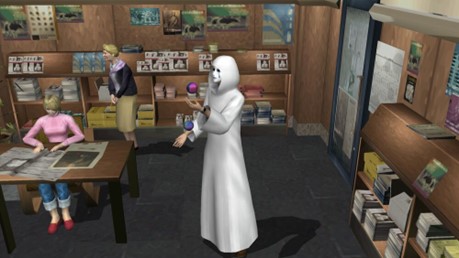
Nothing to see here…
The driving force of the narrative by far are the characters. They are compelling both in how they’re written and performed by their VAs, though I
wish Dana and Margarete were expanded on more as women out of their respective times.
Eike is an endlessly entertaining protagonist. He has that puzzle game protag way of thinking and acting that is both vexing and hilarious, and a
semi-deadpan delivery that seals the deal on its comedic timing.
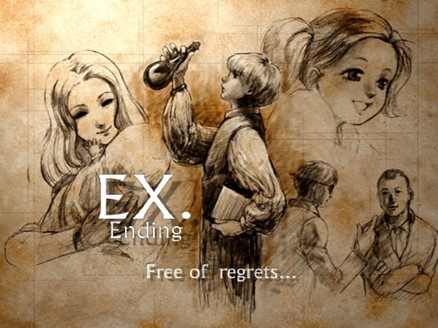
Bittersweet
The game features 8 endings, but it is a game begging to be replayed to experience at least most of them. You kind of need to in order to reach the
EX. Endings, which are the most interesting ones to see (to me at least).
I’m neither interested nor necessitated to spoil them here, because they all wrap back around to positing ‘destiny’ as a central theme of the game.
Ultimately Eike’s efforts are to break from this cycle of destiny, which keeps him trapped and oblivious. Some endings posit that it’s better not
to know, or to know, or to make sure the cycle can never take place again; each a fun one to have a crisis over I imagine.
It's not so much a game that leaves you to think about things and reflect on your own life, rather it serves a compelling story that you want to
dive into in order to figure out what the hell is going on and why.
Whovian Time Travel
Throughout the game Eike is spurred on to repeatedly prevent his own death (it reminded me of the immortal snail hypothetical) and does so with his
handy-dandy digipad; a pocket-sized Tardis that throws him into a whirling time corridor and spits him out on the specified date.
It’s a Tardis with guard rails though, you can only travel to the relevant moments in time to solve the current puzzle. It’d be neat to see what
this game would be like with all ages freely accessible, but I’m guessing it’d be confusing and moderately unplayable.

Eike’s trusty frying pan
Here Eike must do whatever it takes to prevent his own death, be it having a skillet on his back or inspire a moviemaker with an interesting premise. These solutions (as you might be able to surmise) can be funny and contrived but they thankfully don’t suffer from the point-and-click curse of being totally incomprehensible without the assistance of a guide.

Bad idea!
My favourite game interaction here is how the game treats paradoxes. Essentially, if someone were to touch a past (or presumably future) version of
themselves they both disintegrate. This comes up in the game a few times, but you can also do it to yourself funnily enough, and I’m glad the game
lets you do it in the first place.
It’s always cool to see how a time-travel narrative handles something so inherently confusing as paradoxes, and them going with the
all-things-considering pretty straight-forward approach of Total Obliteration is appreciated to keep things manageable.
Everything is Brown

Rivalry yaoi is the best kind of yaoi
The visuals were a mixed bag for me but the most striking part about it are the characters. The designs are subtle for the most part (looking at you,
Fortune Teller) yet easy to discern, and support their personalities.
The concept art is also wonderful in this regard. It does show that the stylization and characterization is considerably toned down in the conversion
to 3D, but the modelling team made homunculus even more androgynous than the concept art, so in my eyes they are forgiven.
My favourite piece is the one shown for this section, where Eike and Homunculus are intwined in cloth. It is, dare I say, peak yaoi.
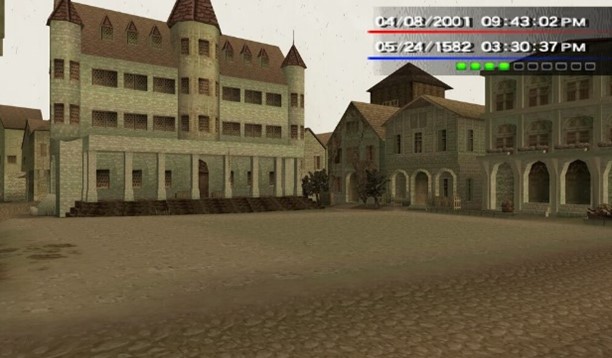
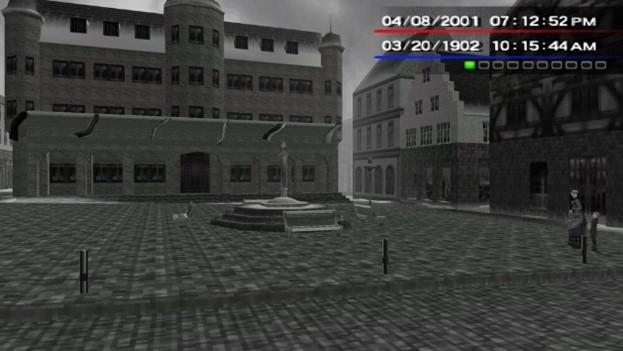
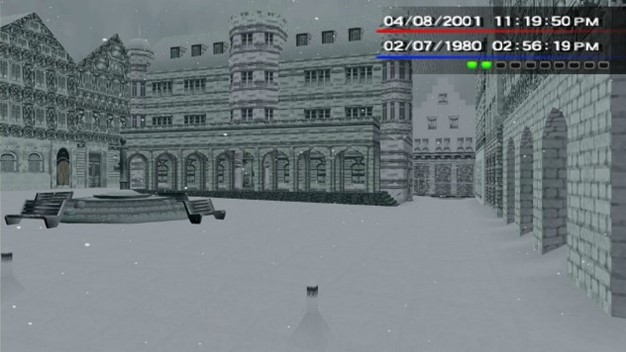
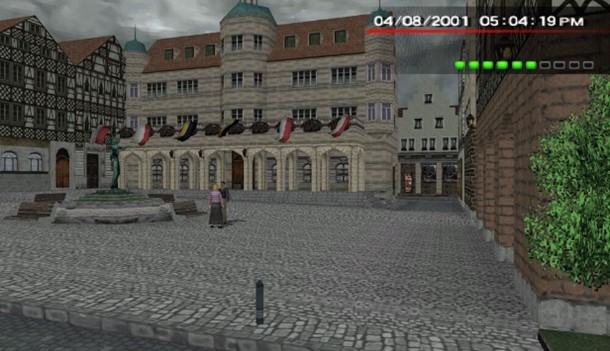
City hall, throughout the ages
A neat trick the game plays throughout its runtime is the use of colour to differentiate the different ages.
The 16th century is about as brown as your average 7th gen military shooter, evoking the sense of an old painting; yellow-brown and darkened
from aged varnish. The century-turn of the 19th and the 20th is in fuzzy black and white, in which the blacks are very dark and the whites
occasionally blinding, like in old photographs. Throughout these ages Eike remains his vibrant, green-vested self, setting a striking contrast
between him and the time’s natives.
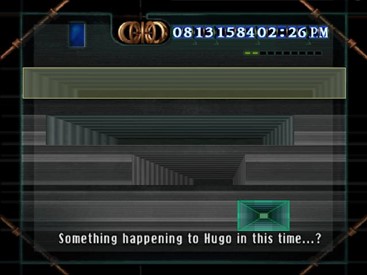
Both terribly confused and enamoured!
The UI and HUD range from minimal to incredibly confusing, especially the digipad’s UI took me a bit to figure out just -why- it looked like -that-. Really like the font choices though, love me a good skinny tall font à la Apple Garamond and both the notebook and the subtitles hit that just right.
'Penis Music' Trailblazer
The OST is an interesting subject. It sets the mood of the different eras but I wouldn’t necessarily call these tracks very musical.
They are violently environmental; most can easily be imagined paired with a cartoon character sneaking around while carefully placing their
feet in the exact rhythm of a plucking violin. It’s like the gameplay is getting a live reenactment from an orchestra, and it feels theatrical
and strange in the best way possible.
When I first heard 'Track Six - 2000A’ I couldn’t help
but laugh, however. The bursts of clarinet(?) flourishes during it are so silly and dissonant it’s hard not to have a reaction to them.
Maybe not helpful in the immersion department, but with this game I don’t really mind or care for that experience. I arguably -want- it to feel
like I’m the spectator of a play where a beautiful klutzy German man fumbles around, tearing apart the timeline.
Conclusion
SoM/D is as silly as it is interesting to me. Despite its comedy probably only being partially intentional, it nails the overall experience and
is full of moments that quite simply fill me with joy.
As with every game, I think you should play it and take a look for yourself.